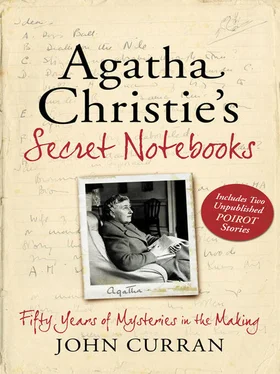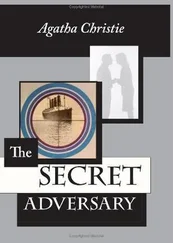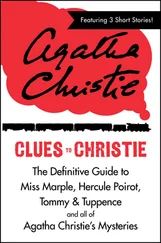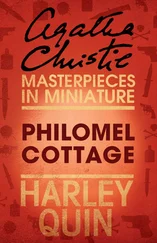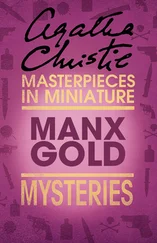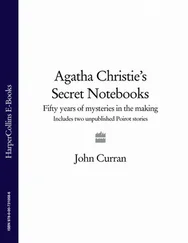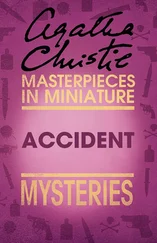It is therefore a disappointment that there are only 15 pages of surviving notes for The A.B.C. Murders, scattered over three Notebooks. I suspect that there were earlier and rougher notes that have not survived, because the book’s intricate premise needed detailed planning and the notes we have are relatively straightforward and organised.
Due to the elaborate plot and large cast of characters, the characterisation is slighter than usual. Dealing as it does with three separate murder investigations involving three sets of suspects, the attention to character drawing has to be somewhat perfunctory. The only people who are delineated in any detail are those who form part of Poirot’s band of investigators.
The earliest jotting would seem to be Notebook 66. It appears as item E on a list that includes the plot outlines for ‘Problem at Sea’, ‘The Dream’, Death in the Clouds, Dumb Witness and Sad Cypress, and also includes the rudimentary germ of what was to become, almost 20 years later, A Pocket Full of Rye:
Series of murders—P gets letter from apparent maniac. First—an old woman in Yorkshire—Second—a business man—Third—a girl (tripper?)—Fourth—Sir McClintock Marsh (who isn’t killed—but escapes)—Fifth—Muriel Lavery
Analysis of his house party—one person knows girl but has absolute cast iron alibi.
Idea of book is to prove alibi false but really Sir MM—murdered second v third victim for reasons of his own—1st and 2nd camouflage—idea being to fasten guilt on cast iron alibi man
It is interesting to note several points of similarity, even in this early jotting, with the finished novel. These include the retention of the idea of the ‘old woman’ as the first victim. The novel’s second victim is a young girl—‘tripper?’—at a seaside resort, reflecting the potential third victim. The device of two earlier murders as camouflage for a third—‘for reasons of his own’—is retained. And the owner of the ‘castiron alibi’ would seem to be the forerunner of Alexander Bonaparte Cust, although a cast-iron alibi is not a feature of his defence.
In contrast, the most surprising divergence from the finished novel is the unmasking of the fourth supposed ‘victim’ of the maniac as the killer. This ‘victim as killer’ idea is not an original concept; already used to great effect by Christie in Peril at End House, it would be used again, to equally surprising effect, in One, Two, Buckle my Shoe, A Murder is Announced and The Mirror Crack ‘d from Side to Side. Why she abandoned it here we can never know, as it was by no means an overworked plot device in her output.
The reference to ‘his house party’ is also puzzling. There is no house party setting in The A.B.C. Murders, although the idea does have echoes of the analysis of Sir Bartholomew Strange’s fatal house party in Three Act Tragedy. And, of course, there is no mention of the alphabetical sequence, which is the whole raison d’être of the novel. If the fifth victim is Muriel Lavery then the sequence is certainly not alphabetical.
Notebook 20 also has a brief outline of the plot and by now the alphabetical sequence has been established. The details of the significant ‘C’ murder have moved nearer to those in the novel. But there are still major differences, especially at the end of the note:
Aberystwyth—old woman Mrs. Ames—husband suspected
Bexhill—Janet Taylor Blythe
Cottersmarch—Sir Morton Carmichael Clarke—also a very wealthy man—his brother Rudolph—anxious to help—Janet Taylor’s friend or sister also keen
Doncaster—James Don—killed in a cinema
P. gets a telegram—E.—sends it himself—man is released—R[udolph] says this must be another murder
Much of the detail of the first four murders here is retained. The A murder features an old lady whose husband is suspected; the location, however, is different (this may be because Andover is easier to spell and/or pronounce than Aberystwyth!). The B murder is the same location although the victim’s name is different. Note the change to a B initial, although Barnard is the surname eventually chosen. The C murder has the same set-up—a wealthy Sir Morton Clarke (note that the name as it appears in the book, Carmichael, is, interestingly, deleted here). The brother and sister of two of the victims are anxious to help, an idea pursued in Poirot’s band of helpers. The D murder does take place in Doncaster and in a cinema, although in the novel it is actually a victim with the surname initial E.
A major surprise, however, and one that is, unfortunately, left unexplained, is the reference to the E murder. I would hazard a guess that in sending an ABC letter to himself Poirot was stage-managing the release from prison of a suspect (possibly Alexander Bonaparte Cust) he knows to be innocent. He could also have been forcing the killer’s hand, thereby precipitating a more dramatic unmasking in the last chapter.
Notebook 66, some 50 pages after the first reference, again takes up the novel beginning with possible locations for the murders. It goes on to consider two theories, both of which contain some elements—the existence of a ‘real’ victim, with an avaricious legatee, in a sequence of ‘camouflage’ victims—that Christie eventually adopted. Finally, it lists the questions that Poirot asks his five helpers in Chapter 32 of the novel:
A.B.C. Murder
Poirot gets letter To Aberystwyth
Brixham or Bexhill
Cheadle or Croydon
Dartmouth Daneshill
Theory A
Intended victim Sir Lucas Oscar Dane—It causes a stir—his fortune goes to his brother Lewis Dane
Theory B
Intended victim Janet King
3rd victim is Sir Oscar Dane—but he is only stabbed—not fatally injured—her will leaves everything to her cousin Vera who is the nurse attending Oscar—Vera and Oscar are attracted to each other
P asks a question of all of them
Megan—a passion for truth—want the truth?—NO—You may not want the truth but you can give a truthful answer!
Thora—would you have married Sir C if his wife had died
F[ranklin] Do you remember the news in the paper the day you landed or [a question about] Ascot hats
J. Have you got a young man?
D[onald] When did you take your holiday
Only one of the possible locations, Bexhill, was actually used in the book. She rejected nearby Dartmouth and both of the C suggestions, eventually settling on somewhere else she did know well, Churston, as the scene of the C murder. It is still possible to get the train, like Poirot and Hastings, to Churston and walk from there to Greenway House, although at this point, 1934, Christie did not yet own the house.
Theory A was the eventual choice as the main plot, although Theory B had some interesting possibilities. Sir Oscar Dane faking an attack on himself in order to kill another victim and inherit, through marriage, a fortune from her is a very Christiean concept and would, no doubt, have produced a surprise ending. It does have more than an echo, from two years earlier, of Peril at End House (where Nick Buckley fakes attacks on herself in order to kill her cousin and inherit a fortune) and this is possibly the reason for its rejection.
The biggest surprise at this point is that the victims are not chosen alphabetically despite the fact that a few pages earlier Christie is listing Brixham/Cheadle/Dartmouth. The third ‘victim’ is Dane and the fourth is King. While some connection between the victims would have been necessary, the alphabetical sequence was inspired. And like many inspirations it is brilliantly simple. Sadly, we will never know who or what inspired it. Perhaps Christie remembered Why Didn’t They Ask Evans?, published in September 1934, two months before she began The A.B.C. Murders, where an open ABC Guide is mentioned in Chapter 24 and used as a clue to a character’s whereabouts?
Читать дальше
Конец ознакомительного отрывка
Купить книгу
